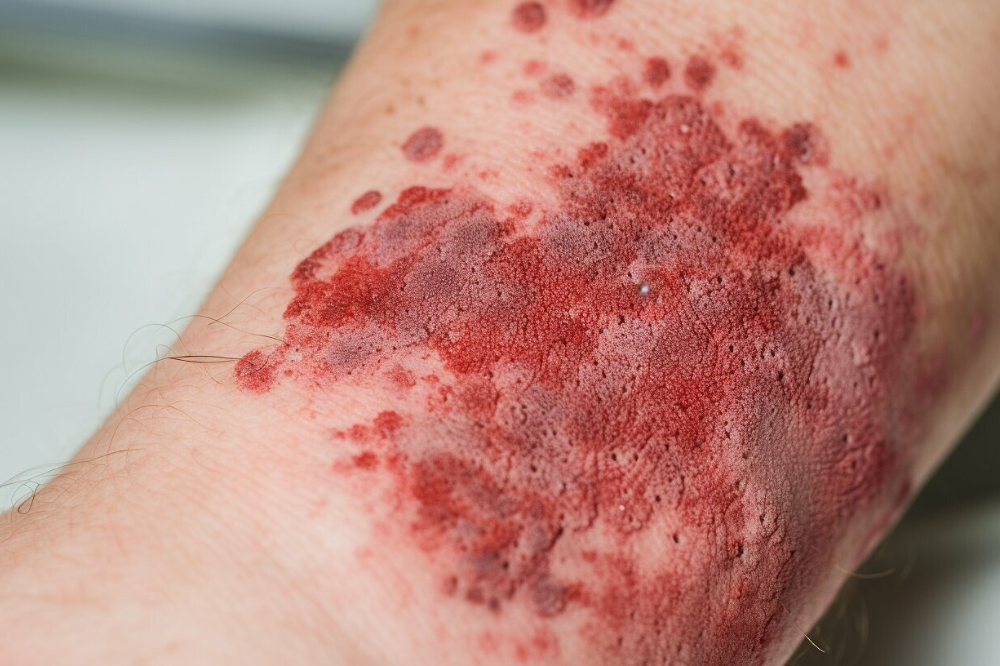Skin rashes can be bothersome and uncomfortable, often causing distress and a desire for quick relief. However, it is crucial to address skin rashes properly to understand their underlying causes and find effective treatments. One potential culprit behind skin rashes is mold, a type of fungus that thrives in damp environments. In this article, we will explore the relationship between mold and skin rash, understanding the connection, identifying symptoms, prevention strategies, and available treatments.
Understanding Mold
To comprehend the impact of mold on our skin, it’s essential to grasp the nature of mold itself. Mold refers to various types of fungi that grow in multicellular filaments called hyphae. These filamentous structures allow mold to spread rapidly, releasing tiny reproductive spores into the air. Some common types of mold include Aspergillus, Cladosporium, and Stachybotrys chartarum (also known as black mold). Mold growth is facilitated by factors such as high humidity, moisture, and poor ventilation, which create ideal conditions for its proliferation.
Skin Rashes: Causes and Symptoms
Skin rashes encompass a wide range of conditions characterized by redness, itching, and inflammation on the skin. There are several causes of skin rashes, including allergies, infections, autoimmune diseases, and irritants. When mold comes into contact with the skin, it can trigger different types of skin rashes. The symptoms associated with mold-related skin rashes may vary, but common signs include redness, itchiness, swelling, and the formation of small bumps or blisters.
The Link Between Mold and Skin Rash
Mold can induce skin rashes through allergic reactions and irritant contact dermatitis. Allergic reactions occur when the immune system reacts to mold spores as harmful invaders, releasing histamines and other chemicals that lead to inflammation and skin rash. Irritant contact dermatitis, on the other hand, is caused by direct contact with mold or its components, irritating the skin and triggering a rash.
Identifying Mold-Related Skin Rashes
Recognizing the signs of mold-related skin rashes is essential for proper diagnosis and treatment. If you suspect mold exposure as the cause of your skin rash, it is advisable to consult a healthcare professional. They can conduct various tests, including patch testing and skin prick testing, to determine if mold or other allergens are triggering your rash. Additionally, a thorough examination of your medical history and symptoms will aid in identifying the connection between mold exposure and skin rash.
Preventing Mold-Related Skin Rashes
Prevention is key when it comes to mold-related skin rashes. By taking proactive steps to prevent mold growth in your environment, you can significantly reduce the risk of developing skin rashes. Maintaining optimal indoor humidity levels, proper ventilation, regular cleaning, and prompt mold removal are effective measures to prevent mold growth. Additionally, investing in dehumidifiers and utilizing mold-resistant materials can provide further protection.
Treating Mold-Related Skin Rashes
For mild cases of mold-related skin rashes, over-the-counter remedies such as antihistamines, corticosteroid creams, and soothing lotions can help alleviate symptoms. However, in more severe or persistent cases, it is crucial to seek professional medical advice. Dermatologists can prescribe stronger topical treatments or oral medications to manage the rash effectively. Furthermore, some individuals may find relief from natural remedies such as aloe vera gel, tea tree oil, or oatmeal baths.
Seeking Professional Help
If you suspect mold as the cause of your skin rash or if the rash persists despite home remedies, it is advisable to consult a healthcare provider. They can evaluate your symptoms, conduct allergy testing to identify specific mold allergies, and recommend appropriate treatments. In some cases, immunotherapy, which involves gradually exposing the body to increasing doses of allergens, may be necessary to desensitize the immune system and reduce the severity of allergic reactions.
Lifestyle Changes for Skin Rash Prevention
Apart from medical interventions, making certain lifestyle changes can play a significant role in preventing mold-related skin rashes. Personal hygiene practices, such as regular handwashing and keeping the skin clean, can minimize the risk of skin infections and irritations. Additionally, adopting a healthy diet rich in antioxidants, vitamins, and minerals can promote overall skin health and resilience.
Case Studies: Real-Life Experiences
Real-life experiences of individuals who have dealt with mold-related skin rashes can provide valuable insights and lessons. These stories highlight the challenges faced, the impact on their daily lives, and the steps taken to overcome the condition. By sharing these experiences, others can gain a deeper understanding of the physical and emotional toll of mold-related skin rashes and discover strategies to manage their own situations.
Conclusion
Skin rashes caused by mold exposure can be distressing, but with proper understanding, prevention, and treatment, relief is possible. By recognizing the signs of mold-related skin rashes and taking prompt action, individuals can mitigate their symptoms and improve their overall well-being. It is crucial to consult healthcare professionals for accurate diagnosis, seek appropriate treatments, and make necessary lifestyle changes to prevent future occurrences. Remember, taking proactive steps to address mold-related skin rashes is essential for maintaining healthy and comfortable skin.



